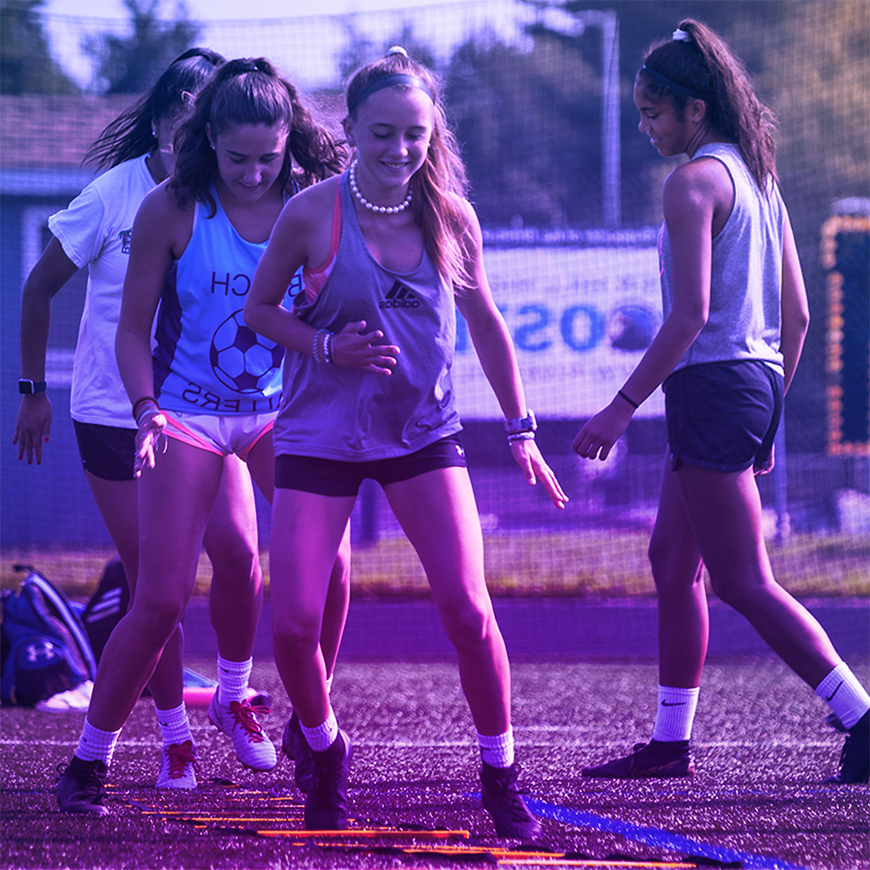
11 May Normalizing the Discussion Around the Female Athlete Menstrual Cycle
Being a coach to young female athletes is a rewarding and fulfilling career. With the growing arena of women’s sports, and the impressionable youth years for middle school girls, more coaches are excited and drawn to work within this space. They want to inspire girls to reach their potential, as well as be the impetus to birth their strengths and help them blossom into womanhood.
Beyond the x’s and o’s, the tactics, and the training session planning, lies another monster that coaches need to be aware of in a young girl’s life. If coaches want to serve the youth female athlete, they need to be aware of everything she is experiencing as she braves the world during her most critical periods of growth.
First and foremost, let us talk puberty.
This defining period happens as young as age 8 and as late as age 13, where a young girl bolts from easygoing childhood into disorienting adolescence. During this time, her body is going through immense amounts of physical, mental and emotional changes:
– Height changes (reduction in balance and control of momentum)
– Weight changes (hips, chest)
– Anatomical structure changes (widening of hips)
– Bone length and density changes (bone density filling in later than length)
– Performance changes (reduction in speed, coordination, balance)
– Onset of menstrual cycle
Most notable from this list, the start of a girl’s first period is a bomb on top of everything else occurring. As a girl tries to find her place in the world, fit into her friend groups, and deal with her drastic body changes, her menstrual cycle just adds more for her to take on.
While this can be overwhelming, this is where coaches can come in and empower her to be at her best physically and mentally, and dial in extra on her training, recovery and nutrition so she can perform at her best.
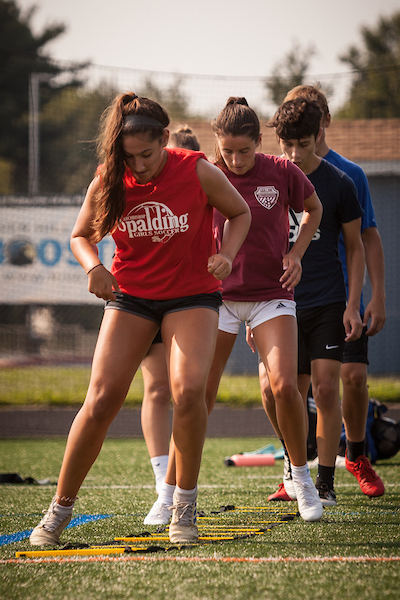
It is why coaches have to approach conversations surrounding the menstrual with great care and understanding as the female athlete navigates this major moment.
What Is The Menstrual Cycle?
The menstrual cycle is a monthly oscillation of hormones to prepare the female body for pregnancy. The onset of a girl’s cycle, also known as “menarche,” begins on average 12.5 years of age. While some girls begin their periods as young as age 8, the latest a girl gets hers can be age 15. Reasons for the various starts in menarche include genetic, nutrition, training load and stress, and if an extremely early or late within this range, it is best to consult with a doctor to see if it is a unique case.
To break down this dynamic time, it is best to look at the four phases that occur during the span of 21-35 days:
- Phase 1 – Menstrual Phase (bleeding)
- Phase 2 – Follicular Phase
- Phase 3 – Ovulation Phase
- Phase 4 – Luteal Phase
If a girl is not pregnant, then the cycle repeats itself the following month in a consistent manner. Understanding a normal pattern of the cycle gives insight into how healthy a female athlete is and if she is taking care of her body well enough.
Understanding a normal pattern of the cycle gives insight into how healthy a female athlete is and if she is taking care of her body well enough Click To TweetA regular cycle should be occurring monthly, and any time there is a missed period it can cause increased fatigue, decreased bone mineral density, increased muscle soreness, and decreased cognition. Missed periods can happen for a plethora of reasons such over-training, under-fueling, under-nourishing, and under-resting. This is concerning for the growing middle school girl because it takes several years after her growth spurt for her bone mineral density to fully fill in, so she must be fueling enough, getting adequate Vitamin D and Calcium, as well as resistance training to improve the durability of her bones. Stress fractures are one of the most common injuries amongst this age group when they are not getting enough fuel and nutrients, but we can easily prevent this with proactive conversations about missed periods and how to tweak nutrition so she is supporting her growth.
Hormonal Changes
Understanding the hormonal and physiological changes during each phase of the menstrual cycle becomes critical when coaches begin to guide girls through their training programs. Too, coaches need to keep in mind their programming and if it is reflecting that of General Physical Preparation template so they are moving in a neurologically mature way amidst hormone fluctuations.
To better understand the hormonal and physiological changes occurring during, it is best to dissect each of the four phases.
Starting with the Menstrual (bleed) Phase, this is the official start of the cycle (Day 1) and bleeding can last 4-7 days.
There may be changes in mood, increased stress levels, and decreased neuromuscular control, due to the hormones progesterone and estrogen dipping during this time.
For most girls, this is when energy levels can wane the most, and they feel the need to be introverts and close off. Coaches may find their reaction is waning at practices and need to be cognizant of the intensity of drills, prescribing more mechanics reinforcement (no new technical work), and moderate deceleration training.
Moving onto the next phase, Follicular, this is when a girl blossoms out of her introverted ways, and begins to regain energy. This is because estrogen rises again, progesterone remains low, and increases muscle glycogen, fat, protein and water storage occur. There is also an increase in endurance during this phase, and it is best to work on aerobic capacity as well as low level, extensive plyometrics.
The third phase, Ovulation, is when the uterus releases the egg to prepare for potential pregnancy. The exact date of ovulation varies amongst girls, but average day occur on Day 14 of the cycle. Testosterone peaks during this time, and it can be an exhilarating time to reap the physiological benefits from more intense strength, power and complex agility training. Energy begins to increase and peak, and girls may show up to practice with glowing confidence as well as sharp thinking.
The final phase, Luteal, is when hormones can get wild as girls begin to prepare for their next month’s bleed phase. Estrogen and progesterone peak, and there is an increase in muscle protein breakdown. Adding on, mood changes, irritability and fatigue come creeping back, as well as potential of delayed reactivity in complex drills.
A Note on PMS
Given the hormonal changes during the Luteal Phase, let us segue into the most well-known component of the cycle: Premenstrual Syndrome (PMS).
Everyone knows about the dreaded PMS, and it is the most dynamic and frustrating time of a girl’s period.
However, this does not mean we wave the surrender flag and condition girls to succumb to its symptoms.
It is a defeating approach to blame PMS and not take action. Moreover it teaches young girls to fall into a victim mindset, feeling like they cannot control these big and bad symptoms.
It is a defeating approach to blame PMS and not take action. Moreover it teaches young girls to fall into a victim mindset, feeling like they cannot control these big and bad symptoms. Click To TweetNewsflash: they can.
It is critical to encourage girls they are in control and can take back their power within their bodies. The solution is not complaining, but rather, changing their environment through basic lifestyle changes, such as quality sleep, nourishment and recovery. The onus is on the coach to present actionable solutions to mitigate the most common symptoms:
- Fatigue
- Irritability
- Muscle Soreness
- Constipation
- Interrupted Sleep
- Cramping
- Bloating
Here is a list of what some girls might need to feel better during this time:
- Meditation
- Sleep
- Time away from social media and technology
- Nature
- Sunlight
- Walks
- Bigger breakfasts and more fuel
- More foods packed with B Vitamins, Iron and Zinc
- Hugs
- More hydration
- Naps
- Resistance training
- Alone/quiet time
Take the symptom of constipation, for example, which can be alleviated with nutritional tweaks, such as fermented foods, fiber filled foods, proper hydration, and walking to improve bowel movements and heal the gut. Some great resources to follow on digestive health and daily lifestyle solutions are Dr. Steven Gundry and Dr. Will Bulsiewicz.
Irritability is also a tough one, and can be caused by the sympathetic dominance of the nervous system, so it is important for female athletes to move into a parasympathetic state through meditation, walking, and time away from the dopamine producing, anxiety inducing social media.
Interrupted sleep is another result of the hormonal fluctuations during the Luteal Phase. Lack of quality sleep proves dangerous for young female athletes who rely on sleep to perform during competition, as it impacts cognition, focus, creativity, and reactivity. Many studies suggest that impaired sleep increases pro-inflammatory cytokines, which impairs immune system function, impedes muscle recovery and repair from damage, leads to autonomic nervous system imbalance (simulating overtraining symptoms), results in slower/less accurate cognitive performance, and alters pain perception (Haack et al. 2001).
Some female athletes still report that even when they limit tech time, wind down before bed, and eat food packed with magnesium and Vitamin C for improved sleep, they still struggle. Napping has been reported by Petit et al as a behavioral measure to alleviate this sleep debt as a last resort. It has been suggested by Davies et al that there are two “ideal” time durations for a nap. The authors would suggest that nap durations of less than 20 minutes may be preferential, to reduce the likelihood of waking up during slow-wave sleep (Davies et al. 2010).
These are just a few ways to facilitate the recovery process, and some conversation starting points when talking to a girl about getting adequate rest.
Too, encouraging her to listen to her body’s needs and practice these symptom relievers consistently over time, a girl can regain equilibrium within her body and balance out her hormones. The majority of these are potent recovery tools, and a female athlete is as powerful as her recovery routine.
A female athlete is as powerful as her recovery routine. Click To TweetEffect on Performance and Injury Risk
This is when the conversation surrounding the menstrual cycle gets complex.
Several studies have suggested that the menstrual cycle does significantly impact female athlete performance, while others are not so clear. Making this more difficult to understand, there are minimal studies that have utilized a study group of middle school girls. For now, we will have to settle for the research done in older populations that encompasses longer reporting.
In a study done by Pallavi et al15 a difference during the follicular and luteal phases was reported when examining muscle function. They found that muscle contractions were significantly higher, more forceful, and less fatigable during the follicular phase than during the luteal phase (Pallavi et al 2017).
Julian et al studied soccer players’ performance in both an endurance test and a sprint test. Athletes’ scores on the endurance test were significantly lower during the luteal phase than during the follicular phase (Julian et al 2017).
Sprint performance and high intensity running remains unclear in the literature, as a review of several studies suggest there is no found difference in performance measures between the Follicular and Luteal phases.
In a more recent study done by Scandinavian Journal of Medicine & Science in Sports, female athletes reported that did were unaware their cycles might impact performance, but they did report feeling “less confident” and “annoyed and paranoid” from bleeding, and it is another thing to manage (Brown et al 2021). However, some reported performing at their best during the bleed phase, which reinforces that this is highly individual.
As far as injury risk, there is no definitive research yet on increased joint laxity on increased non-contact ACL injury. Even if there were, instead of making this defeating news our focal point, let us shift the mindset to what we can control as far as training and recovery habits. After all, we want to lift young girls up and ensure they avoid the victim mentality.
Since the training and recovery around the menstrual cycle is still a novel concept, it is hard to give universal solutions for all female athletes and give everyone an exact template to follow.
While more research still needs to be done in this area, here’s what we know and can do:
– Symptoms during menstrual cycle are highly individual
– Symptoms can impact performance (cognition) and recovery (sleep patterns)
– Symptoms can be alleviated through simple lifestyle changes as mentioned above (sleep, parasympathetic activities, and nutrition)
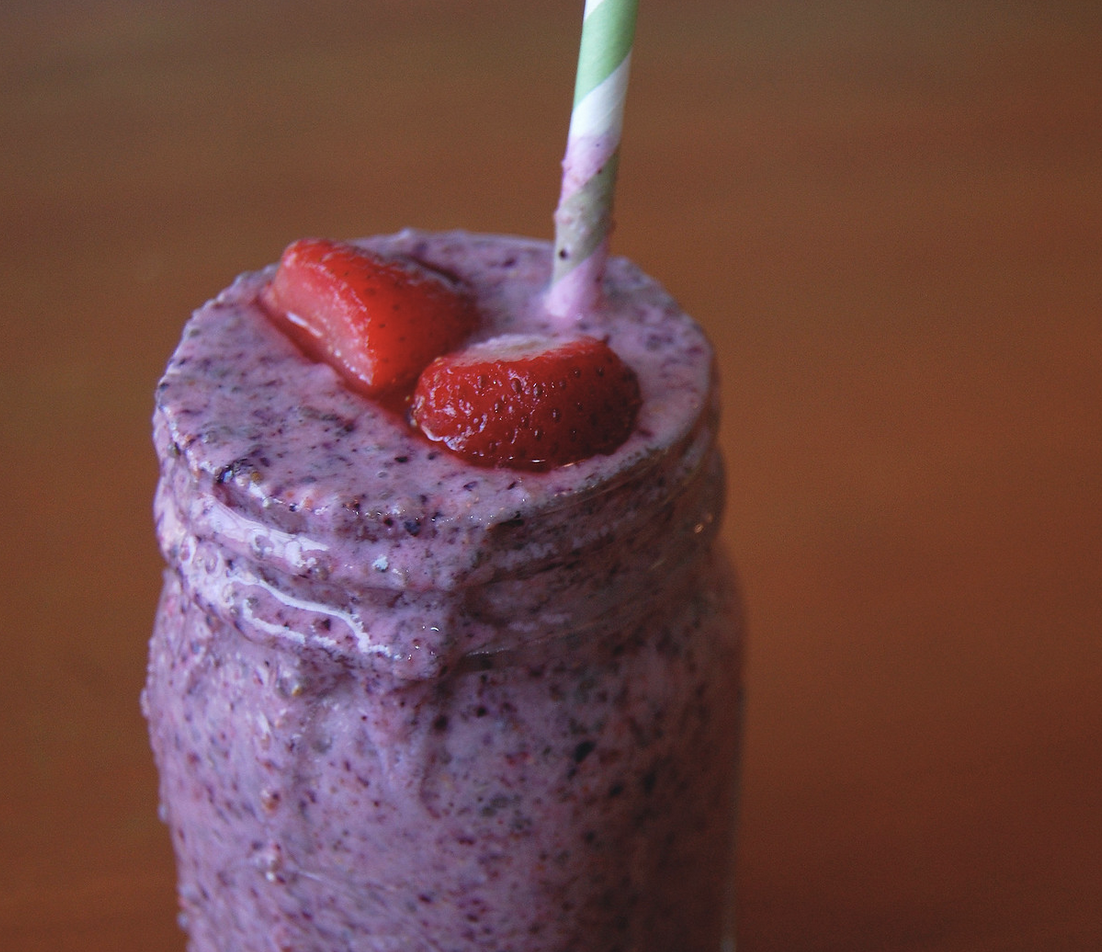
Knowing this about negative symptoms that can hinder performance, this begs the question, ‘what should be done in training?’ Moreover, should coaches tip toe around a female athlete’s cycle and constantly adjust training and cut back on load. This is when things get frustrating because at the youth level, it is hard to get everyone on the same page due to more limited resources and education.
Coaches can keep it simple by:
– Focusing on mechanics: fine motor skill reinforcement becomes even more paramount, from reinforcing landing mechanics, to deceleration work, to change of direction technique (for executing General Physical Preparation in a practical setting check out THE TOTAL YOUTH FEMALE ATHLETE FITNESS VIDEO COURSE)
– Continuing to strengthen the total youth female athlete: when it comes to strength training, this can be an optimal time to reap the benefits of muscle building and help girls feel empowered and confident
– Focusing on recovering hard: coaches can be repetitive in their messaging to young girls and help them to dial in on nutrition, sleep and recovery lifestyle changes
Normalizing the Conversation
As a female coach, this topic is far from uncomfortable for me, but I do understand the reluctance from male coaches and the awkwardness surrounding the conversation.
To put things into perspective for those shying away, we have to remember that the female menstrual cycle is a natural life process. It is not something we need to shut down and ignore, as it is something girls are born with and need to face their entire lives. With that said, we have to flow with nature instead of fighting against it so we can serve our female athletes’ training and recovery needs.
Coaches are doing a disservice to their female athletes’ performance and injury reduction if they are not starting to have the period conversation.
Coaches are doing a disservice to their female athletes’ performance and injury reduction if they are not starting to have the period conversation Click To TweetTaking the discussion back to what coaches can do, it bodes well to make performance and recovery the focus. Coaches do not need to preface a session with “let us talk menstrual cycle!” but rather, they can be more subtle and center the conversation around nutrition, sleep and lifestyle changes and explain to girls the impact these have on their energy levels, mood, focus and motivation.
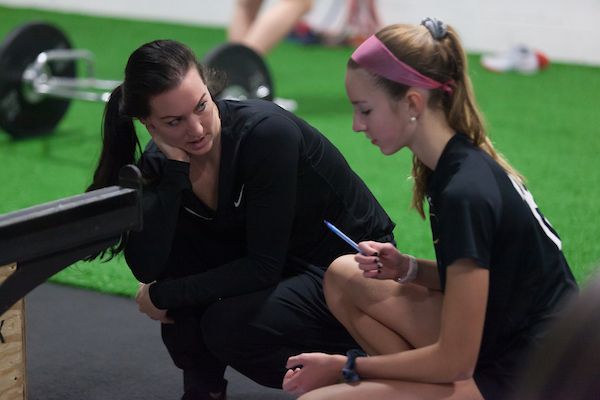
Period Tracking and Maintaining Equilibrium
The best way to help girls get familiar with their personal symptoms during their cycle is to have them track their period over time (FitRWoman app). It is critical to do this over the span of several months, preferably a year, for consistent and reliable reporting of symptoms. Additionally, girls can track to see if the get missed periods and need to adjust their stress management, nutrition and fueling regimens. The more girls can understand how their bodies work and what is a normal cycle, the better they can give their bodies what they need.
Though most girls report they experience similar symptoms during each of the four phases, there are some outliers and symptoms still remain highly individual. The best thing about the FitRWoman app is they give nutritional insights for each phase and the how to nourish and fuel the body to manage symptoms.
Expounding further, coaches can continue to be relentless about advising female athletes with the lifestyle methods mentioned above, and be consistent with their discussions at each training session. Having their girls take inventory of their lifestyles, from nutrition, to sleep, to recovery, to stress management and have them rank each week and see where they are falling short is a good way to take action.
For more information and continuing education on how to manage symptoms, I highly recommend all coaches take this amazing free course The Australian Institute of Sport put together on the female athlete menstrual cycle. It is an excellent resource for coaches who want simplified information on improving female athlete performance and recovery during this time.
It is imperative we begin to normalize the conversation surrounding the menstrual cycle so girls know how to take back their power, and not succumb to the storm of hormones. They can take charge of their performance and regain equilibrium once and for all.
Get the Total Youth Female Athlete Fitness video course to learn how to teach female athletes strength technique, speed, and change of direction mechanics for injury reduction and performance, as well as learn about growth and maturation considerations, menstrual cycle, nutrition, and so much more HERE
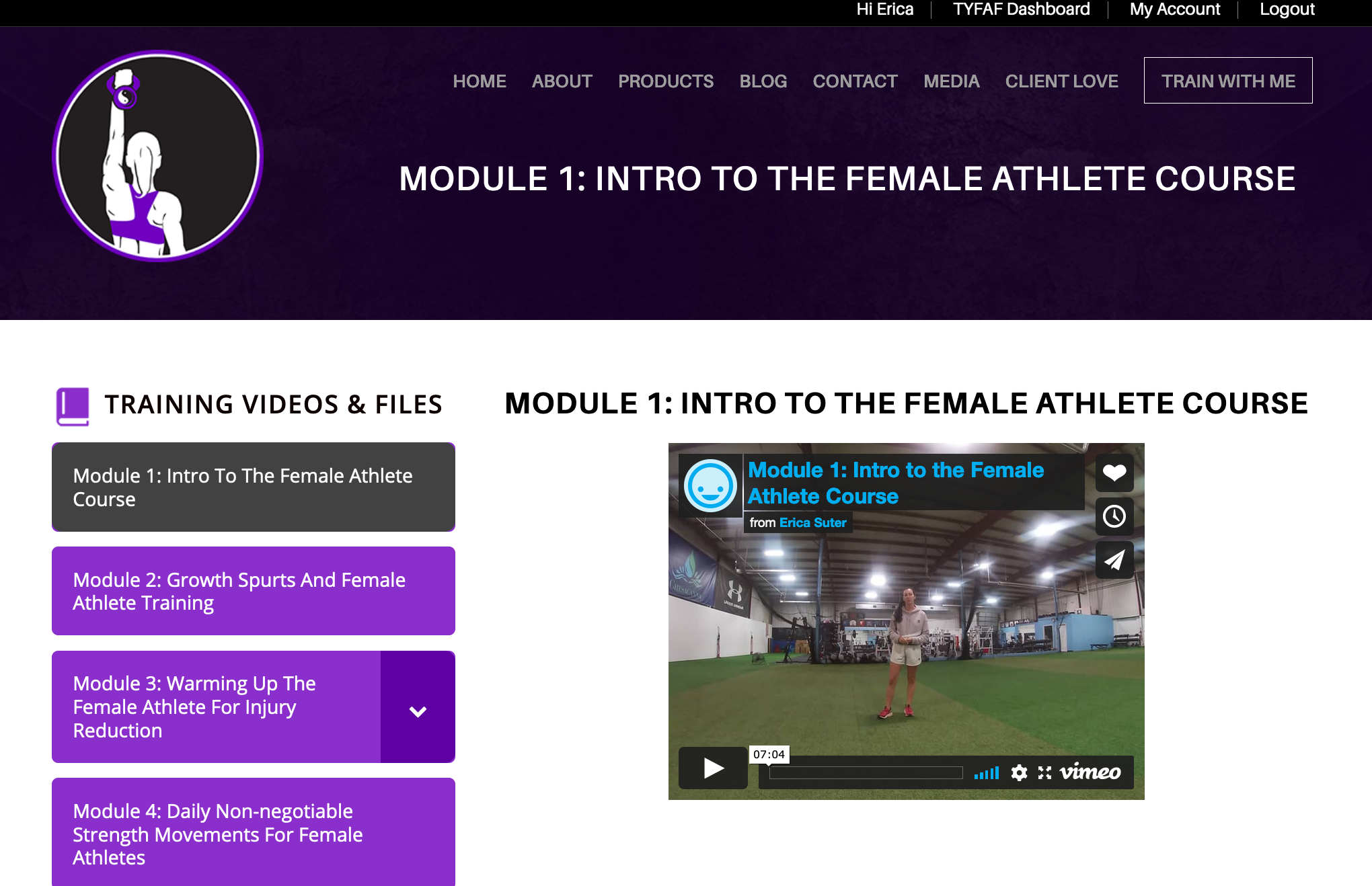
Once you get access to the course, you will get a private invite to join the Total Youth Female Athlete Fitness Facebook community, where coaches of girls exchange ideas, and discuss how they’re executing these pieces in a practical setting. I will also give the most up-to-date research on female athletes and be available for questions.
Get Total Youth Female Athlete Fitness HERE.
To work with me in person in Tampa, Florida on soccer speed, strength and conditioning, CONTACT ME HERE.
REFERENCES
Brown, N., Knight, C. J., & Forrest, L. J. (2021). Elite female athletes’ experiences and perceptions of the menstrual cycle on training and sport performance. Scandinavian Journal of Medicine & Science in Sports, 31(1), 52-69.
Davies D, Graham K, Chow C. The effect of prior endurance training on nap sleep patterns. Int J Sports Physiol Perform. 2010;5(1):87–97.
Mougin F, Bourdin H, Simon-Rigaud ML, Nguyen NU, Kantelip JP, Davenne D
J Sports Sci. 2001 Feb; 19(2):89-97.
Haack M, Lee E, Cohen DA, Mullington JM
Pain. 2009 Sep; 145(1-2):136-41.
Haack M, Sanchez E, Mullington JM
Sleep. 2007 Sep; 30(9):1145-52.
Julian, R., Hecksteden, A., Fullagar, H. H., & Meyer, T. (2017). The effects of menstrual cycle phase on physical performance in female soccer players. PloS one, 12(3), e0173951. https://doi.org/10.1371/journal.pone.0173951
Pallavi, L. C., D Souza, U. J., & Shivaprakash, G. (2017). Assessment of Musculoskeletal Strength and Levels of Fatigue during Different Phases of Menstrual Cycle in Young Adults. Journal of clinical and diagnostic research : JCDR, 11(2), CC11–CC13. https://doi.org/10.7860/JCDR/2017/24316.9408
Petit E, Mougin F, Bourdin H. A 20-min nap in athletes changes subsequent sleep architecture but does not alter physical performances after normal sleep or 5-h phase-advance conditions. Eur J Appl Physiol. 2014;114(2):305–315


No Comments